MURIEL SPARK NOVELS
 READING MY WAY THROUGH MURIEL SPARK On Goodreads I posted the question, “Who writes like Barbara Pym, one of my favorite authors?” A friend replied that I should try Muriel Spark’s A Far Cry from Kensington. There began my reading of Spark, an author who had escaped me, though she was twice short-listed for the Booker Prize and in 2008 included by The Times as among Britain’s top 50 writers since 1945.
READING MY WAY THROUGH MURIEL SPARK On Goodreads I posted the question, “Who writes like Barbara Pym, one of my favorite authors?” A friend replied that I should try Muriel Spark’s A Far Cry from Kensington. There began my reading of Spark, an author who had escaped me, though she was twice short-listed for the Booker Prize and in 2008 included by The Times as among Britain’s top 50 writers since 1945.
A Far Cry from Kensington, which appeared late (1988) in Spark’s writing life is set in post-War London, where the female protagonist lives in a rooming house, and, when all are awakened by a commotion in the night, is waltzed around the side yard by a medical student in his bathrobe, a scene very Pym-like. But as I began reading forward from Spark’s first novel, The Comforters, I discovered an unexpected variety in Spark, books linked only by her voice and her ability to hold me fascinated, in part because, as with Anne Tyler, another of my favorite authors, with Spark I never know where she’s going, where she will leave me. Unlike Tyler and Pym, Spark writes much plot in her characterizations.
Consider the array of characters and stories in the Spark novels I’ve read so far, and remember that, despite the differences, each book is clearly a cousin of the others, bearing the strong family resemblance of the author’s voice.
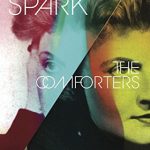 In The Comforters (1957) a young woman’s typewriter types by itself, and she realizes she’s become a character in a novel.
In The Comforters (1957) a young woman’s typewriter types by itself, and she realizes she’s become a character in a novel.
In Robinson (1958) a plane crash strands a young woman and two men—the men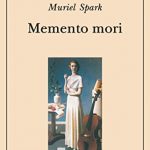 of questionable character—on an island inhabited by an uningratiating Robinson and a boy.
of questionable character—on an island inhabited by an uningratiating Robinson and a boy.
Memento Mori (1959) features the elderly, including nursing home “grannies,” viewing end-of-life intrigue, including swindling, while being studied by a sociologist.
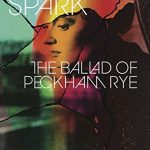 In The Ballad of Peckham Rye (1960) a hunchbacked young Scotsman comes to an industrial London suburb, poses as an efficiency expert, and inspires psychological and social havoc, as well as physical violence.
In The Ballad of Peckham Rye (1960) a hunchbacked young Scotsman comes to an industrial London suburb, poses as an efficiency expert, and inspires psychological and social havoc, as well as physical violence.
An epileptic handwriting expert stars among The Bachelors (1960) who meet over pints to ponder the outcome of the fraud and swindling trial of an older medium who has impregnated a young woman in love with him.
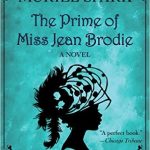 School girls react to a teacher of strong influence and incidentally fascist leanings in The Prime of Miss Jean Brodie (1961), probably the best known of Spark’s novels owing to its success as a play in London and New York and to the film for which Maggie Smith won best actress. In my reading of Spark novels so far, it is my least favorite. I think many reviewers confuse the novel with the play and the film in that they see Miss Brodie as seriously fascist when in fact she is frivolous in her fascism, drawn to the pageantry of men in uniforms more than to an ideology.
School girls react to a teacher of strong influence and incidentally fascist leanings in The Prime of Miss Jean Brodie (1961), probably the best known of Spark’s novels owing to its success as a play in London and New York and to the film for which Maggie Smith won best actress. In my reading of Spark novels so far, it is my least favorite. I think many reviewers confuse the novel with the play and the film in that they see Miss Brodie as seriously fascist when in fact she is frivolous in her fascism, drawn to the pageantry of men in uniforms more than to an ideology.
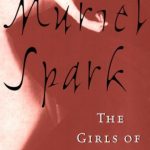 The Girls of Slender Means (1963) live in a post-War London “society home,” really a boarding house. As in A Far Cry from Kensington, the young female protagonist works for a publisher and is privy to intrigues of the writing world.
The Girls of Slender Means (1963) live in a post-War London “society home,” really a boarding house. As in A Far Cry from Kensington, the young female protagonist works for a publisher and is privy to intrigues of the writing world.
I’m currently reading The Mandelbaum Gate (1965), set in a Jerusalem divided between Israel and Jordan. A British diplomat meets a touring Brit school teacher, born to a Jewish mother and protestant father and now Roman Catholic (all three happen to be the author’s case also). The teacher’s crossing through the Gate into Jordan might lead to nothing more than a visit to the holy sites, but could lead to her being arrested and executed.
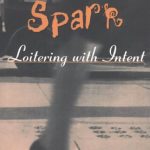 I yet look forward to reading twelve Spark novels published from 1968 to 2004. Two other novels I’ve read out of sequence: A Far Cry from Kensington (1988), my introduction to Spark, and Loitering with Intent (1981). The latter was short-listed for the Booker Prize. These two novels, published seven years apart, and The Girls of Slender Means, published eighteen years before Loitering with Intent, are the most Barbara Pym-like novels of Spark, among the Spark books I’ve read so far. Each of these three books presents a young intellectual woman’s view of her life in post-War London. Although Spark books have humor, they also have tragic moments of the sort Pym never wrote, so for that reason, if no other, one could never confuse a Pym-like Spark novel with a Pym novel. I love Pym for the books she wrote and now also love Spark for the books from her pen.
I yet look forward to reading twelve Spark novels published from 1968 to 2004. Two other novels I’ve read out of sequence: A Far Cry from Kensington (1988), my introduction to Spark, and Loitering with Intent (1981). The latter was short-listed for the Booker Prize. These two novels, published seven years apart, and The Girls of Slender Means, published eighteen years before Loitering with Intent, are the most Barbara Pym-like novels of Spark, among the Spark books I’ve read so far. Each of these three books presents a young intellectual woman’s view of her life in post-War London. Although Spark books have humor, they also have tragic moments of the sort Pym never wrote, so for that reason, if no other, one could never confuse a Pym-like Spark novel with a Pym novel. I love Pym for the books she wrote and now also love Spark for the books from her pen.
(For more about Spark or her novels you might visit The Official Website of Dame Muriel Spark or the Wikipedia Muriel Spark page.)
Gary Garth McCann
First-prize winner for short works and for suspense/mystery, Maryland Writers’ Association, Gary Garth McCann is the author of the novella Young and in Love? and of the novels The Shape of the Earth and The Man Who Asked To Be Killed, praised at the Washington Independent Review of Books. His most recent published stories are available online in Chelsea Station Magazine, Erotic Review Magazine, and in Mobius: The Journal of Social Change. His other stories appear in The Q Review, reprinted in Off the Rocks, in Best Gay Love Stories 2005, and in the Harrington Gay Men’s Fiction Quarterly. See his blogs at garygarthmccann.com and streamlinermemories.com.
- Web |
- More Posts(57)